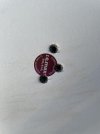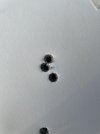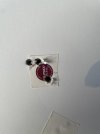As with anything else, you have to start somewhere. Regardless of what you choose, there will be a learning curve. Many people are happy with the MS. I opted for the LR because I did not want anything mounted on the barrel or rifle. What is best can be subjective.I've had my eye on a magneto speed but honestly I know nothing about chronos. If you were say just starting out and wanted to pick up one for load work that was accurate and did the job but didn't break the wallet which one would you buy? I guess I'm asking which one do you think is the best deal.. Thanks again. I value your input.
-
If you are being asked to change your password, and unsure how to do it, follow these instructions. Click here
You are using an out of date browser. It may not display this or other websites correctly.
You should upgrade or use an alternative browser.
You should upgrade or use an alternative browser.
I need some help from the reloading gurus.
- Thread starter ShootnMathews
- Start date
 Help Support Long Range Hunting Forum
Help Support Long Range Hunting Forum
Weight is of no consequence and is a complete waste of time when it comes to brass. There is no way to correlate internal case capacity of two pieces of different brands even with different lots by the same manufacturer. Where the extra weight in a case is may or may not be in an area that impacts case volume capacity.So did you weigh the empty cases to see what the difference is between them?
Weighing brass may help you to feel better about your components, however, makes no difference unless the internal capacity of the case is actually known.
ShootnMathews
Well-Known Member
Ok guys. For those following here's this evenings shooting. I took 9 of the 12 Lapua cases that I have fired and loaded them working up because I know from past experience that I'll need a little hotter load in Lapua. I was hoping that maybe this rifle just needed the brass fire formed and I think that is the case. I FL sized, trimmed, chamfered the brass and brushed the neck inside extremely well and then started at 46 grains which was the load the federal brass shot 1/4 MOA. Then I loaded 46.2 and 46.4. Here are the pics. The 46 shot a little over an inch vertical. The 46.2 shot about 1" vertical and the 46.4 shot about 1/2" vertical. I don't know if I pulled that last shot low or not on the 46.4. Im betting not since the other groups were vertical. With the virgin brass I got just the ever so slightest cratering on the primer at 46.6 so I'm on the fence as to whether to try 46.5. I probably will because I think that will pull it all together. Maybe even 46.6. How bad is a little cratering anyways? 
 j/k. On the virgin 46.6 you could just barely feel where the pin strike was. So I'm not going to say I got a bad batch of Lapua brass because I love Lapua brass.
j/k. On the virgin 46.6 you could just barely feel where the pin strike was. So I'm not going to say I got a bad batch of Lapua brass because I love Lapua brass. 
 I'm just going to say this rifle likes fire formed brass.
I'm just going to say this rifle likes fire formed brass. 
 . For reference that red sticker is 3/4"
. For reference that red sticker is 3/4"
Edit: I have to try some fire formed Lapua at 46.6. I think it will pull the group back together into sub 1/2 MOA. Which is good enough for me. This is a sub 500 yard deer rifle for me. I'm not even worried about ES and SD really. It won't matter much that close as long as they group decent. Most shots will be under 300
Edit: I have to try some fire formed Lapua at 46.6. I think it will pull the group back together into sub 1/2 MOA. Which is good enough for me. This is a sub 500 yard deer rifle for me. I'm not even worried about ES and SD really. It won't matter much that close as long as they group decent. Most shots will be under 300
Attachments
Last edited:
ShootnMathews
Well-Known Member
.002"Fire formed and then FL sized? When you FL sized how far did you push the shoulder?
Darkker
Well-Known Member
As Boss Hoss said, weighing brass only tried you for much gravity it has; nothing to do with capacity.
If you want to know something, measure it.
Here's a perfect example, from pressure testing I was doing on a Creedmoor with LRP Vs. SRP.
Lapua:
Average weight - 165.1gr
Largest spread - 0.5gr
Norma:
Average weight - 154.78gr
Largest spread - 2.2gr
Same powder charge from the same lot, same BTO with the same bullets from the same box. The extremely minor differences recorded by the Pressure Trace, were low end of statistical noise.
A very real possibility for why the change, is the different alloys used. Lapua claims to use the original WWII Olin C260 alloy, with an undisclosed heat treat spec. Federal brass on the other hand, is notably softer; sometimes dangerously close to the case head. They do this for faster obturation, which almost always improves accuracy/burning curves. The flip side of that coin, is case life isn't always so great for a reloader. And if one is simply praying to the alter of "signs", it's a further reason why staring contests don't reliably inform actual pressures.
Cheers
If you want to know something, measure it.
Here's a perfect example, from pressure testing I was doing on a Creedmoor with LRP Vs. SRP.
Lapua:
Average weight - 165.1gr
Largest spread - 0.5gr
Norma:
Average weight - 154.78gr
Largest spread - 2.2gr
Same powder charge from the same lot, same BTO with the same bullets from the same box. The extremely minor differences recorded by the Pressure Trace, were low end of statistical noise.
A very real possibility for why the change, is the different alloys used. Lapua claims to use the original WWII Olin C260 alloy, with an undisclosed heat treat spec. Federal brass on the other hand, is notably softer; sometimes dangerously close to the case head. They do this for faster obturation, which almost always improves accuracy/burning curves. The flip side of that coin, is case life isn't always so great for a reloader. And if one is simply praying to the alter of "signs", it's a further reason why staring contests don't reliably inform actual pressures.
Cheers
Try to fill it with water and see which one has more H20 capacity. My WAG is the Norma.As Boss Hoss said, weighing brass only tried you for much gravity it has; nothing to do with capacity.
If you want to know something, measure it.
Here's a perfect example, from pressure testing I was doing on a Creedmoor with LRP Vs. SRP.
Lapua:
Average weight - 165.1gr
Largest spread - 0.5gr
Norma:
Average weight - 154.78gr
Largest spread - 2.2gr
Same powder charge from the same lot, same BTO with the same bullets from the same box. The extremely minor differences recorded by the Pressure Trace, were low end of statistical noise.
A very real possibility for why the change, is the different alloys used. Lapua claims to use the original WWII Olin C260 alloy, with an undisclosed heat treat spec. Federal brass on the other hand, is notably softer; sometimes dangerously close to the case head. They do this for faster obturation, which almost always improves accuracy/burning curves. The flip side of that coin, is case life isn't always so great for a reloader. And if one is simply praying to the alter of "signs", it's a further reason why staring contests don't reliably inform actual pressures.
Cheers
https://www.longrangehunting.com/threads/338-norma-magnum-improved-h2o-capacity-gain.325181/
Darkker
Well-Known Member
I'm aware of how to measure volume, I'm not the one who used confused on what measurements tell you what. 
I also have the traces, showing the actual pressures of each. Which as I already said, were statistically no different.
Cheers
I also have the traces, showing the actual pressures of each. Which as I already said, were statistically no different.
Cheers
I never said you are unfamiliar or confused, but you already took the time to measure two brands of brass to present a fact, which is great. Showing the H20 volume capacity is another piece of information that might potentially be helpful. I, too, do not weigh my brass.I'm aware of how to measure volume, I'm not the one who used confused on what measurements tell you what.
I also have the traces, showing the actual pressures of each. Which as I already said, were statistically no different.
Cheers
Darkker
Well-Known Member
I took the time to measure pressures in a rifle calibrated with 10 rounds of SAAMI reference ammo also. But that wasn't germane to the point being made about why case weight is a silly approximation for capacity.I never said you are unfamiliar or confused, but you already took the time to measure two brands of brass to present a fact, which is great. Showing the H20 volume capacity is another piece of information that might potentially be helpful. I, too, do not weigh my brass.
Cheers
I already said I, too, do not weigh my brass. Of course, it is an approximation. However, you can also measure the useable case capacity, also an approximation.I took the time to measure pressures in a rifle calibrated with 10 rounds of SAAMI reference ammo also. But that wasn't germane to the point being made about why case weight is a silly approximation for capacity.
Cheers
cdherman
Well-Known Member
Bull Bull and more Bull you know what.Weight is of no consequence and is a complete waste of time when it comes to brass. There is no way to correlate internal case capacity of two pieces of different brands even with different lots by the same manufacturer. Where the extra weight in a case is may or may not be in an area that impacts case volume capacity.
Weighing brass may help you to feel better about your components, however, makes no difference unless the internal capacity of the case is actually known.
Your chamber is pretty much fixed. The case capacity after a couple firings is the chamber capacity minus the case weight, OK? Its physics. The brass has expanded to whatever size the chamber is reamed at, plus headspace. ASSUMING you are not full length resizing every round.....
Lighter cases accept more powder. Heavy cases accept less. The ratio of brass to to powder is small -- brass is denser by far, right at 20:1, but not inconsequential.
Crap, why is this concept such a challenge for some people..........
LBull Bull and more Bull you know what.
Your chamber is pretty much fixed. The case capacity after a couple firings is the chamber capacity minus the case weight, OK? Its physics. The brass has expanded to whatever size the chamber is reamed at, plus headspace. ASSUMING you are not full length resizing every round.....
Lighter cases accept more powder. Heavy cases accept less. The ratio of brass to to powder is small -- brass is denser by far, right at 20:1, but not inconsequential.
Crap, why is this concept such a challenge for some people..........


